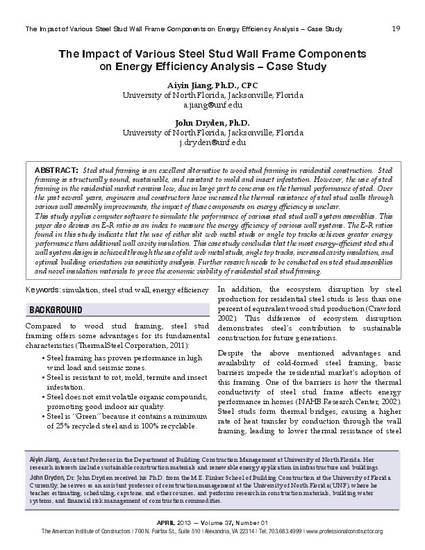
Steel stud framing is an excellent alternative to wood stud framing in residential construction. Steel framing is structurally sound, sustainable, and resistant to mold and insect infestation. However, the use of steel framing in the residential market remains low, due in large part to concerns on the thermal performance of steel. Over the past several years, engineers and constructors have increased the thermal resistance of steel stud walls through various wall assembly improvements, the impact of these components on energy efficiency is unclear. This study applies computer software to simulate the performance of various steel stud wall system assemblies. This paper also devises an E-R ratio as an index to measure the energy efficiency of various wall systems. The E-R ratios found in this study indicate that the use of either slit web metal studs or angle top tracks achieves greater energy performance than additional wall cavity insulation. This case study concludes that the most energy-efficient steel stud wall system design is achieved through the use of slit web metal studs, angle top tracks, increased cavity insulation, and optimal building orientation via sensitivity analysis. Further research needs to be conducted on steel stud assemblies and novel insulation materials to prove the economic viability of residential steel stud framing.
Available at: http://works.bepress.com/aiyin_jiang/10/

Published in The Professional Constructor Journal, April 2013, Vol. 37 (1), pp. 19-25, ISSN 0926-5805
https://www.professionalconstructor.org/page/Journal